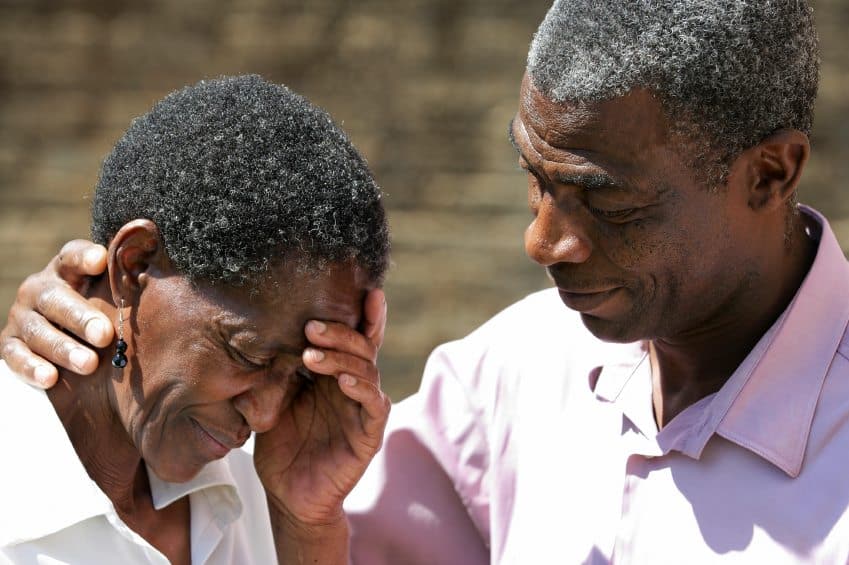
What Are Micro-Betrayals? How Small Hurts Damage Relationships
Understanding Micro-Betrayals: Quiet Hurts That Undermine Closeness
Reviewed by Debra Feinberg LCSW
At Maplewood Counseling, we provide inclusive care for people of all races, cultures, and backgrounds, including interfaith, interracial, BIPOC, LGBTQIA+, and blended families. Our therapists bring lived experiences and specialized training to create a safe, affirming space for all.

What Are Micro-Betrayals—and How Are They Different from Micro-Cheating?
Micro-betrayals often go unnoticed in daily life. Unlike micro-cheating, which usually involves secret interactions outside the relationship, micro-betrayals are the subtle, everyday moments that might seem harmless but quietly erode emotional safety and trust right at home. These are the overlooked actions—like brushing off a partner’s feelings or choosing distractions over connection—that don’t cross boundaries with others, but instead chip away at intimacy within your relationship.
Why Are Micro-Betrayals So Hard to Notice?
What makes micro-betrayals especially challenging is their subtlety. You may not realize how much these moments add up, or how deeply they can affect your partner’s sense of worth and connection. Their impact isn’t about breaking big relationship rules—it’s about the daily, often unintentional signals that say, “you don’t matter as much as you think.” The emotional impact can linger, creating a slow drift between you and the person you care about most.
Micro-Betrayals: Everyday Interactions That Matter
What sets micro-betrayals apart is the way they are woven into the fabric of everyday interactions, sometimes disguised as simple forgetfulness or minor oversights. They’re not about infidelity or outside attention—they’re about how you show up for each other, or don’t, in small but important ways.
Strategies for Noticing and Healing Micro-Betrayals
To offer more value and real solutions, let’s look beyond merely identifying micro-betrayals and dig into new strategies for recognizing and healing from them:
- Build Awareness Together: Start regular check-ins as a couple—not just when something feels wrong. Ask, “Are there any small ways we’ve accidentally hurt each other lately?” This invites honest, non-blaming dialogue and sets the tone that small things matter as much as the big ones.
- Acknowledge Impact, Not Just Intent: When discussing these moments, remember that hurt feelings aren’t always about what someone meant—sometimes, it’s simply about how their actions felt. Giving space to process emotions without judgment helps partners feel seen and valued.
- Practice Repair in Real Time: Rather than waiting for issues to build, learn to “catch and repair” small hurts as they happen. A gentle “That stung a little—can we talk about it?” can prevent days or weeks of silent distance.
- Invest in Emotional Rituals: Develop small, positive routines—like a daily check-in, gratitude exchange, or unplugged meals—that reinforce your care and attention. These rituals become protective buffers against micro-betrayals.
- Stay Curious, Not Critical: When you spot a pattern, approach it with curiosity: “I notice we’ve both seemed distracted during our talks lately—is something on your mind?” A supportive attitude invites partnership in finding solutions.
Moving Forward: Turning Micro-Betrayals into Moments of Growth
By focusing on these unique aspects, this guide gives you not just understanding, but also practical ways to spot, address, and heal from micro-betrayals—helping you protect your connection long before minor hurts become major divides.
The Challenge of Noticing Micro-Betrayals
What makes micro-betrayals especially challenging is their subtlety. You may not realize how much these moments add up, or how deeply they can affect your partner’s sense of worth and connection.
The Difference Between Intent and Impact
Their impact isn’t about breaking big relationship rules—it’s about the daily, often unintentional signals that say, “you don’t matter as much as you think.” The emotional impact can linger, creating a slow drift between you and the person you care about most.
How Micro-Betrayals Show Up in Daily Life
What sets micro-betrayals apart is the way they are woven into the fabric of everyday interactions, sometimes disguised as simple forgetfulness or minor oversights.
Not Infidelity, But Still a Breach of Connection
They’re not about infidelity or outside attention—they’re about how you show up for each other, or don’t, in small but important ways.
Recognizing and Healing Micro-Betrayals: Practical Strategies
To offer more value and real solutions, let’s look beyond merely identifying micro-betrayals and dig into new strategies for recognizing and healing from them:
Building Awareness as a Couple
- Build Awareness Together: Start regular check-ins as a couple—not just when something feels wrong. Ask, “Are there any small ways we’ve accidentally hurt each other lately?” This invites honest, non-blaming dialogue and sets the tone that small things matter as much as the big ones.
Focusing on the Impact
- Acknowledge Impact, Not Just Intent: When discussing these moments, remember that hurt feelings aren’t always about what someone meant—sometimes, it’s simply about how their actions felt. Giving space to process emotions without judgment helps partners feel seen and valued.
Repairing in Real Time
- Practice Repair in Real Time: Rather than waiting for issues to build, learn to “catch and repair” small hurts as they happen. A gentle “That stung a little—can we talk about it?” can prevent days or weeks of silent distance.
Creating Emotional Rituals
- Invest in Emotional Rituals: Develop small, positive routines—like a daily check-in, gratitude exchange, or unplugged meals—that reinforce your care and attention. These rituals become protective buffers against micro-betrayals.
Staying Curious and Supportive
- Stay Curious, Not Critical: When you spot a pattern, approach it with curiosity: “I notice we’ve both seemed distracted during our talks lately—is something on your mind?” A supportive attitude invites partnership in finding solutions.
How This Guide Helps You Spot and Heal Micro-Betrayals
By focusing on these unique aspects, this guide gives you not just understanding, but also practical ways to spot, address, and heal from micro-betrayals—helping you protect your connection long before minor hurts become major divides.
Frequently Asked Questions (FAQ) About Micro-Betrayals
What makes micro-betrayals different from micro-cheating?
Micro-betrayals are about everyday interactions and small moments within your relationship that quietly signal a lack of care or attention—think dismissing a partner’s feelings, not keeping a promise, or tuning out emotionally. Unlike micro-cheating, which often involves secrecy or attention outside the partnership, micro-betrayals are rooted in the way couples interact and pay attention to each other in daily life.
Why do small, repeated hurts matter in a long-term relationship?
Small hurts may seem trivial on their own, but when they happen over and over, they can erode trust, safety, and closeness in your relationship. Over time, they send the message that your needs and feelings aren’t a priority. Addressing these moments early helps you protect your relationship from the slow drift often caused by unspoken disappointments.
How do I know if my relationship is struggling with micro-betrayals?
Look for patterns: Do you or your partner avoid bringing up little hurts because you don’t think they matter? Do you feel less comfortable sharing your feelings, or notice more distance between you lately? Noticing these cues—like withdrawing, feeling resentment, or relying less on each other—can be signs that micro-betrayals are building up.
How should we bring up micro-betrayals without making things worse?
The key is to be gentle and specific. Use “I” statements and describe your feelings and needs without blame. For example, “I felt disconnected when we ate dinner without talking—I miss checking in with you.” Invite your partner to share as well. Keeping the focus on your experience instead of pointing fingers opens up a safer space for both people.
Can we repair trust after a pattern of micro-betrayals?
Absolutely. Trust is rebuilt through small, consistent actions over time. Honest, kind conversations and following through on commitments—no matter how minor—show your partner that you value their feelings. Making new emotional habits or routines together can repair small cracks before they widen into deeper rifts.
When is it time to seek professional help for micro-betrayals?
If you’ve tried talking about these issues and still feel stuck, or if your efforts to reconnect only spark new arguments or pain, working with a counselor may help. Professional support offers a non-judgmental space to unpack patterns, practice new skills, and heal together, especially when hurt or distance feel hard to bridge alone.
How can we prevent micro-betrayals from happening in the future?
Prevention is about building awareness and prioritizing your bond. Set aside regular check-in times, catch and repair small hurts quickly, and stay curious about your partner’s feelings. Making each other feel seen and important in small daily ways strengthens the connection that protects your relationship from quiet wounds.
Is it normal to sometimes miss the impact of our actions on each other?
Yes—no one is perfect, and everyone slips up. What matters most is how you respond once you notice. Acknowledgment, sincere apologies, and genuine effort to do better show your partner you care, even when you make mistakes. Being willing to check in and talk openly helps keep little hurts from becoming lasting scars.
Helpful Resources
- Understanding Anxiety: Learn how therapy can help manage anxiety.
- Grief Counseling: Support for processing loss and navigating grief.
- Individual Therapy: Personalized support for managing depression and stress.
- Guide to Self-Esteem: Build confidence and self-worth.
- Trauma-Informed Therapy: Support for healing from past trauma.
At Maplewood Counseling, we are dedicated to supporting individuals, couples, and families in achieving mental wellness. Based in Maplewood, NJ, we proudly serve the Essex County, NJ community and offer statewide telehealth services to ensure accessible care for all. Whether you’re seeking help for anxiety, depression, relationship challenges, or personal growth, our experienced team is here to guide you every step of the way.
We Use HIPAA Compliant Telehealth Platform SimplePractice for our Telehealth Sessions








